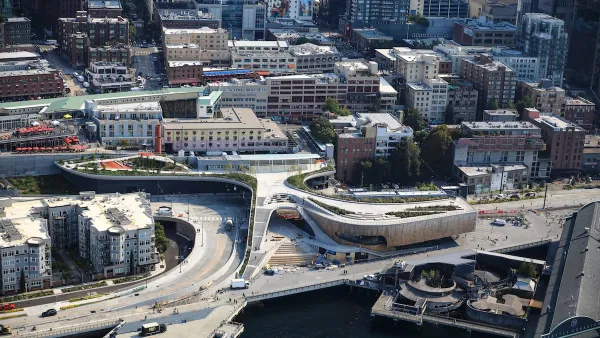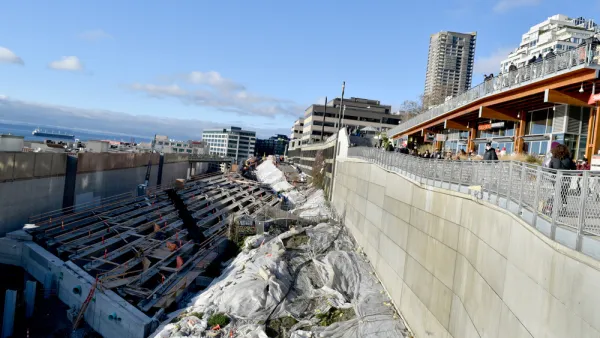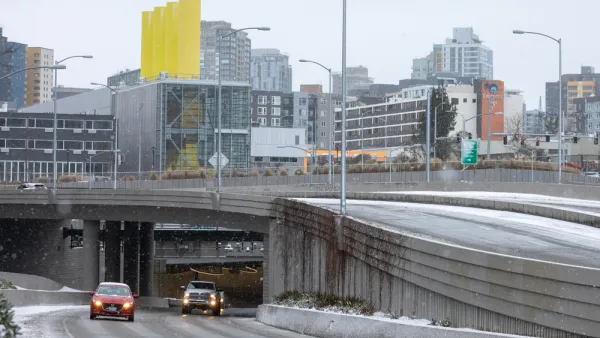With elections coming up, local politicians are peddling various plans for the replacement of the Alaska Way Viaduct -- though there is increasing consensus around removing the freeway and creating a waterfront boulevard.
"The debate about Seattle's Alaskan Way Viaduct used to be a very public, contact sport, but as many local politicians were carted off the field, the controversy moved to a 30-person stakeholders group, who meet very quietly. Meanwhile, the politicians edge back onto the playing field and hint at solutions.
Gov. Chris Gregoire addressed a group of civic worthies Wednesday and dropped broad hints that she is now a fan of the no-tunnel, no-viaduct, surface-plus-transit solution that she used to excoriate. Noting that Seattle is an "international city," Gregoire defined that gauzy term by saying an international city could not possibly have on-street parking downtown or two-way streets. (So much for New York and Paris, but nevermind.) Those may be weird definitions, but they are unmistakable signals that she is buying into the stakeholder group's emerging consensus to divert a lot of viaduct through traffic to Seattle's downtown streets, thus needing only a four-lane, slow boulevard on the central waterfront."
"The story marks a remarkable political journey by local politicians. They have gone from thinking that all the present traffic needed to be accommodated by any solution to the viaduct to thinking in terms of moving people (in various modes), not just cars. All these urban freeways were once paid for largely by federal money. Now they are in need of expensive repair and the feds have fled. One solution is to scrape up local money to rebuild them. When the voters said a loud No to that idea (and the climate change issue moved to the fore), we quietly thought about another approach: removing freeways. It might work."
FULL STORY: Psst! Wanna see the Viaduct disappear?

Analysis: Cybertruck Fatality Rate Far Exceeds That of Ford Pinto
The Tesla Cybertruck was recalled seven times last year.

National Parks Layoffs Will Cause Communities to Lose Billions
Thousands of essential park workers were laid off this week, just before the busy spring break season.

Retro-silient?: America’s First “Eco-burb,” The Woodlands Turns 50
A master-planned community north of Houston offers lessons on green infrastructure and resilient design, but falls short of its founder’s lofty affordability and walkability goals.

Test News Post 1
This is a summary

Analysis: Cybertruck Fatality Rate Far Exceeds That of Ford Pinto
The Tesla Cybertruck was recalled seven times last year.

Test News Headline 46
Test for the image on the front page.
Urban Design for Planners 1: Software Tools
This six-course series explores essential urban design concepts using open source software and equips planners with the tools they need to participate fully in the urban design process.
Planning for Universal Design
Learn the tools for implementing Universal Design in planning regulations.
EMC Planning Group, Inc.
Planetizen
Planetizen
Mpact (formerly Rail~Volution)
Great Falls Development Authority, Inc.
HUDs Office of Policy Development and Research
NYU Wagner Graduate School of Public Service




























